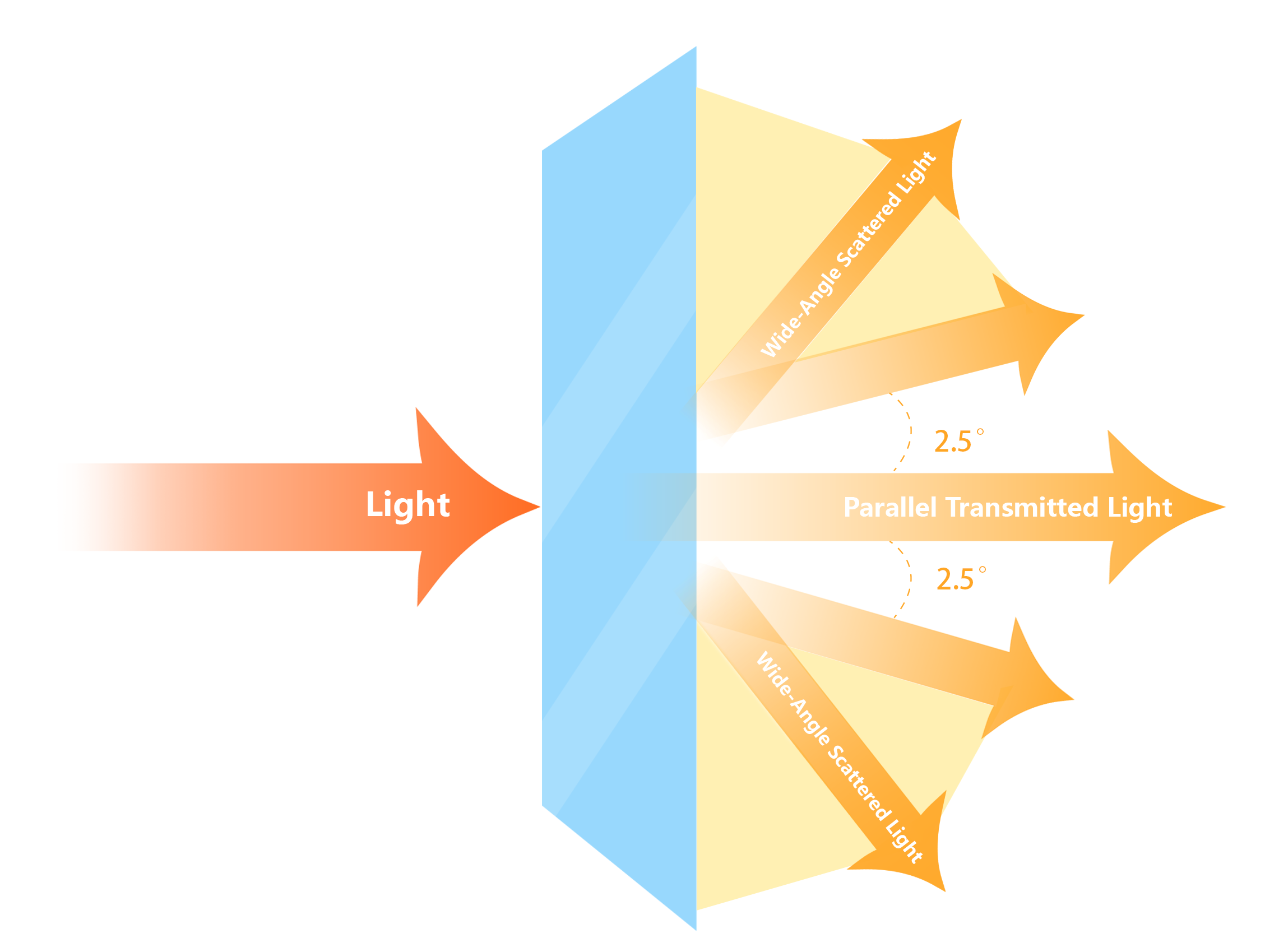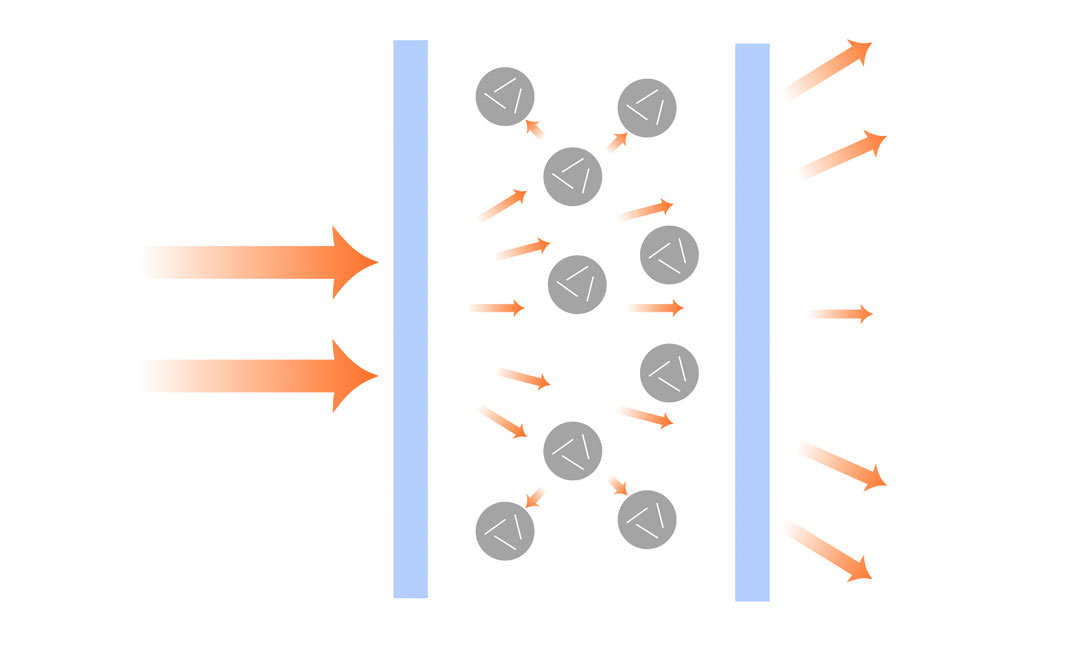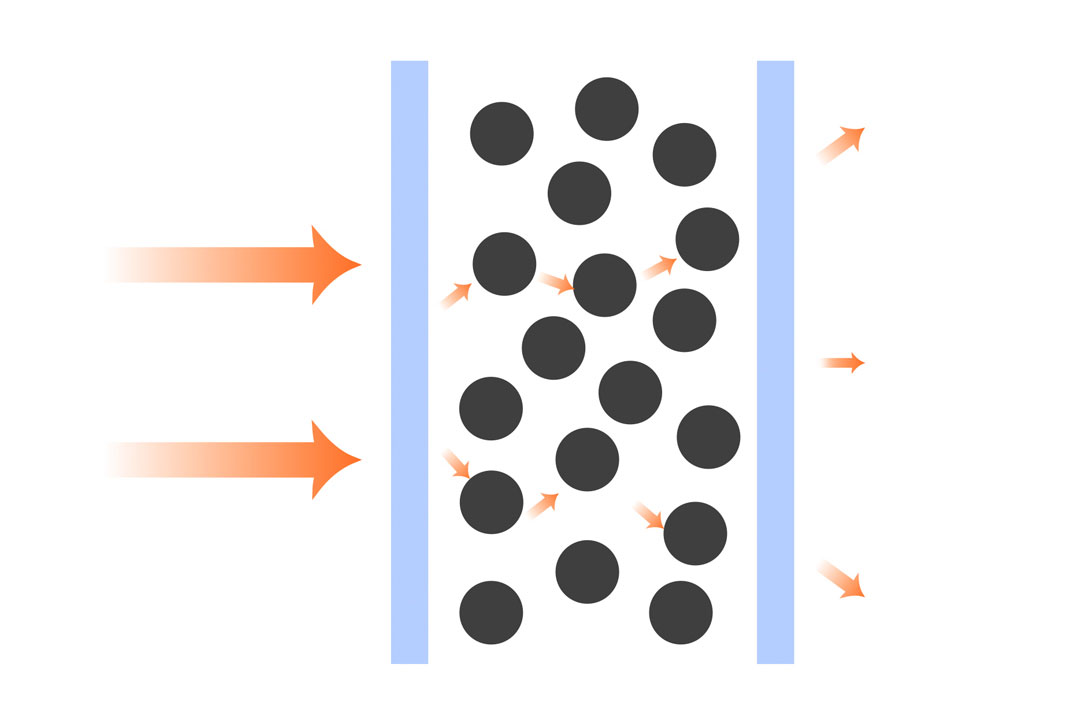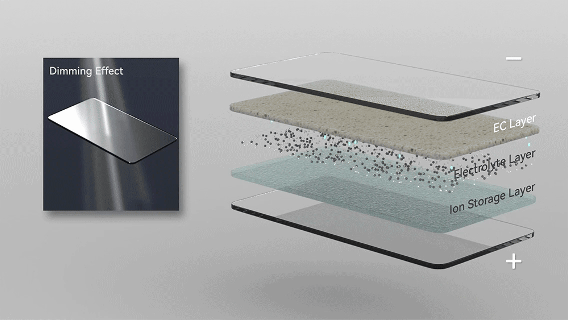When observing the world through transparent materials like glass, have you ever wondered why some glasses appear foggy while others are crystal clear? The answer lies in the haze of these materials, which varies based on their composition and structure. Ambilight delves into the reasons behind these differences and compares the haze performance across various dimming technologies, revealing why Electrochromic (EC) dimming technology maintains the best clarity.

What is 'Haze'?
Haze quantifies the cloudy or misty irregular state observed in transparent materials. When light hits a surface, a portion continues straight as parallel transmitted light, while another portion scatters as diffused light. Scattering that deviates more than 2.5° from the incident light’s direction is considered wide-angle scattering. Haze is defined as the percentage of total transmitted light intensity that scatters beyond this 2.5° threshold. Higher haze values result in reduced gloss, diminished transparency, and poorer image quality.

Factors Influencing Haze
Surface Roughness: Textures or roughness on the surface.
Internal Structure: Micro-particles, bubbles, or uneven molecular distribution within the material.
Additives or Fillers: Pigments, stabilizers, and other minute particles.
Material Thickness: Thicker materials generally have longer light paths for scattering, resulting in higher haze.
Crystal Structure and Crystallinity: Interfaces between crystalline and amorphous regions in semi-crystalline structures cause scattering, with uneven crystallization increasing haze.
Optical Properties: Differences in refractive indices among components, especially in multi-layer materials, can also lead to scattering.
Comparative Analysis of Haze Across Dimming Technologies
The primary dimming technologies include Polymer Dispersed Liquid Crystal (PDLC), Suspended Particle Device (SPD), and Electrochromic (EC). Each has distinct structural and operational principles affecting their haze performance differently.
PDLC Dimming Technology
Polymer Dispersed Liquid Crystal (PDLC) dimming technology operates on physical principles. Its internal structure consists of liquid crystal molecules dispersed as micro-droplets, at the micron level, within a solid organic polymer matrix. Its optical behavior depends on the alignment state and molecular properties of the liquid crystals.
When powered off, the liquid crystal molecules are randomly arranged, causing light to scatter as it passes through. Additionally, the refractive index of the liquid crystal droplets differs from that of the surrounding polymer matrix. Light undergoes multiple refractions and reflections between the liquid crystal droplets and the polymer, further increasing the scattering effect. This results in higher haze, giving the transparent material a milky, frosted appearance.

This can be compared to having many small mirrors randomly arranged inside the material, with each mirror positioned at different angles and orientations. When light passes through these "mirrors", it is reflected in various directions. Even if some light manages to pass through the material, it does so at an angle greater than 2.5°, exiting "diagonally."

SPD Dimming Technology
Suspended Particle Device (SPD) dimming technology also operates on physical principles. Its structure consists of tiny particles suspended in a liquid medium. The haze is primarily caused by the irregular distribution of these suspended particles and their light-scattering properties.
When powered off, the suspended particles are randomly and disorderly distributed. As light passes through the material, these disordered particles block and scatter the light, causing it to disperse and resulting in haze.

This can be likened to a glass of water containing many tiny ink dots. Under normal circumstances, these ink dots float randomly in the water, spreading out in all directions. When light passes through the glass, these ink dots "block" some of the light, preventing it from passing through directly. Even if some light manages to pass through, it does so at an angle due to the disrupted path of propagation.

EC Dimming Technology
Unlike PDLC and SPD dimming technologies, Electrochromic (EC) dimming technology is a chemical-based dimming solution. Under the influence of an electric field, reversible oxidation-reduction reactions occur within the EC material (primarily in the EC layer, electrolyte layer, and ion storage layer), altering the material’s color and light transmittance.

The changes in light transmittance and color of EC materials are uniform. Since EC technology relies on chemical reactions rather than molecular or particle orientation changes for dimming, minimal scattering occurs when light passes through the EC material. Nearly all light remains parallel or directly transmitted. As a result, EC dimming technology maintains a consistently transparent state throughout the dimming process.

Furthermore, EC materials do not contain structures like liquid crystals or particles, so there is no scattering caused by differences in media or gap sizes. Light passes through without being disrupted or bent. Therefore, when applied to transparent substrates, EC dimming technology consistently achieves ultra-high clarity and ultra-low haze, whether in its bright or dark state.
Practical Applications of Different Dimming Technologies
Each dimming technology caters to specific applications based on its inherent advantages. For instance, high-haze solutions like PDLC and SPD are excellent for privacy protection, making them ideal choices for office partitions or bathroom windows. In contrast, low-haze EC technology stands out in scenarios that demand high clarity and visual comfort, such as car windows, architectural glass, and eyewear.
Ambilight’s EC smart dimming technology not only meets the need for high transmittance but also provides users with a clearer, more natural visual experience. Recognized globally by professionals, it boasts over 100,000 loyal users and has forged collaborations with numerous renowned brands. Looking ahead, Ambilight’s EC smart dimming technology promises to unlock even greater possibilities within the realm of smart glass applications.